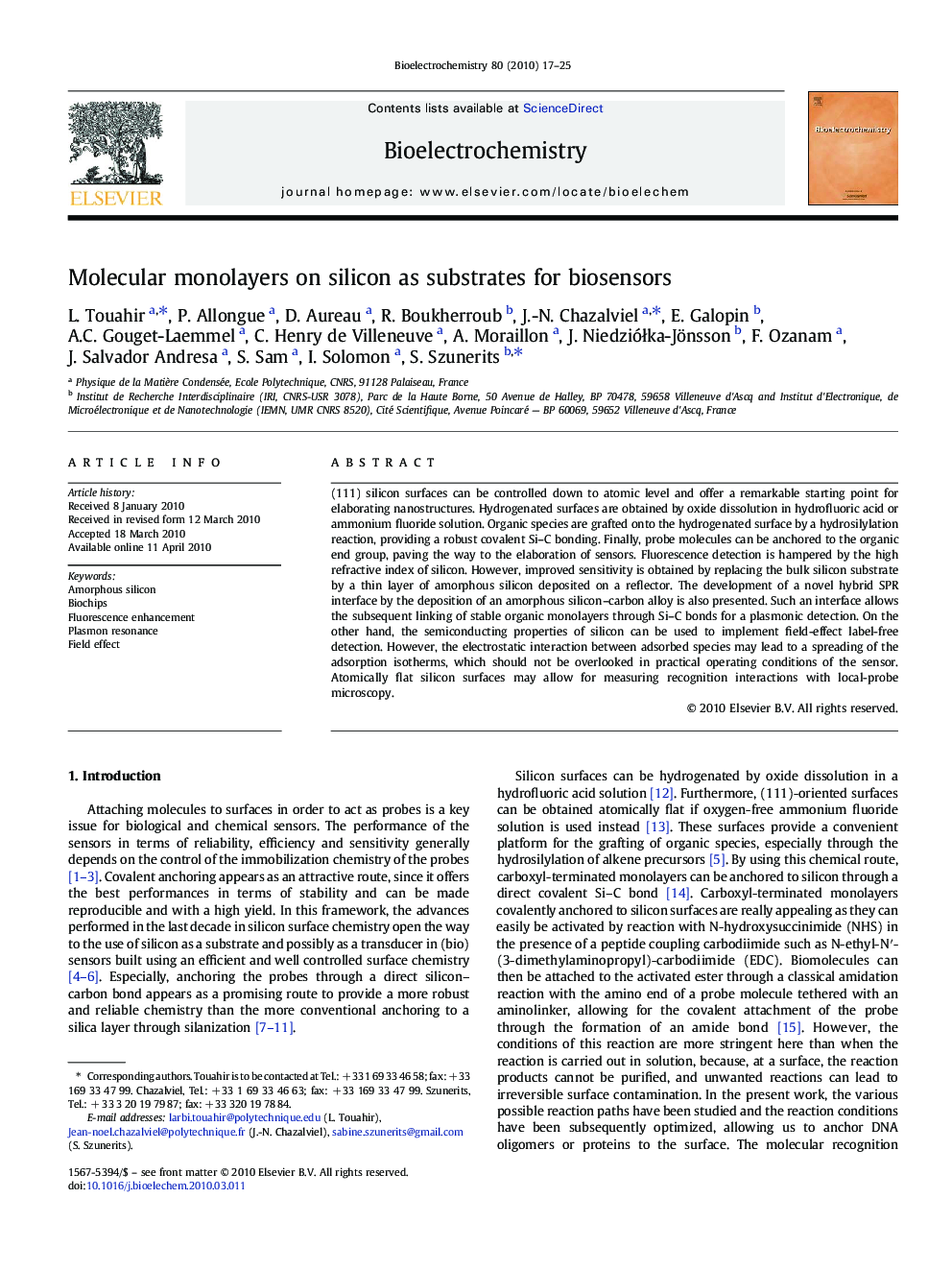| کد مقاله | کد نشریه | سال انتشار | مقاله انگلیسی | نسخه تمام متن |
|---|---|---|---|---|
| 1274839 | 972626 | 2010 | 9 صفحه PDF | دانلود رایگان |

(111) silicon surfaces can be controlled down to atomic level and offer a remarkable starting point for elaborating nanostructures. Hydrogenated surfaces are obtained by oxide dissolution in hydrofluoric acid or ammonium fluoride solution. Organic species are grafted onto the hydrogenated surface by a hydrosilylation reaction, providing a robust covalent Si–C bonding. Finally, probe molecules can be anchored to the organic end group, paving the way to the elaboration of sensors. Fluorescence detection is hampered by the high refractive index of silicon. However, improved sensitivity is obtained by replacing the bulk silicon substrate by a thin layer of amorphous silicon deposited on a reflector. The development of a novel hybrid SPR interface by the deposition of an amorphous silicon–carbon alloy is also presented. Such an interface allows the subsequent linking of stable organic monolayers through Si–C bonds for a plasmonic detection. On the other hand, the semiconducting properties of silicon can be used to implement field-effect label-free detection. However, the electrostatic interaction between adsorbed species may lead to a spreading of the adsorption isotherms, which should not be overlooked in practical operating conditions of the sensor. Atomically flat silicon surfaces may allow for measuring recognition interactions with local-probe microscopy.
Journal: Bioelectrochemistry - Volume 80, Issue 1, November 2010, Pages 17–25